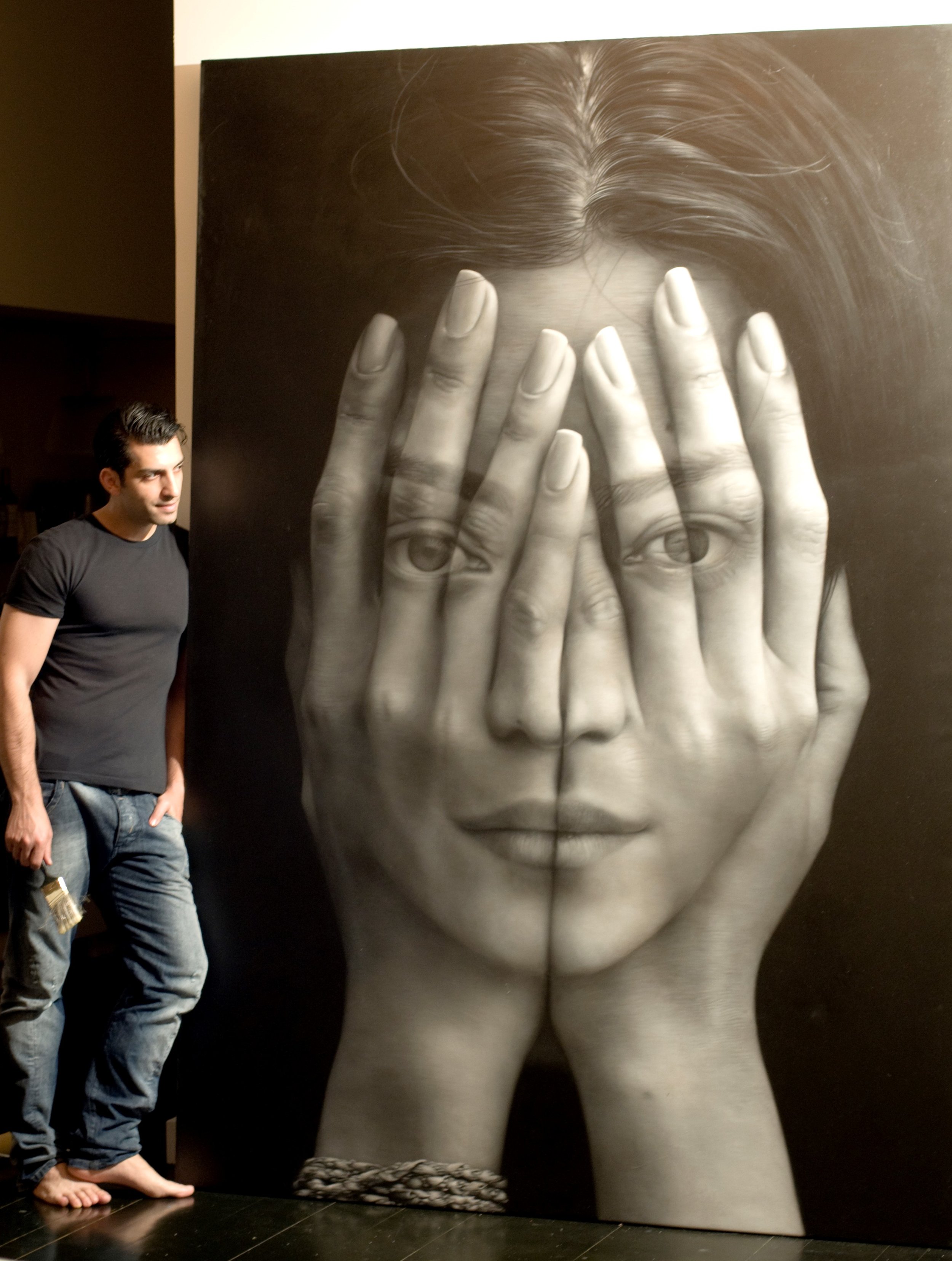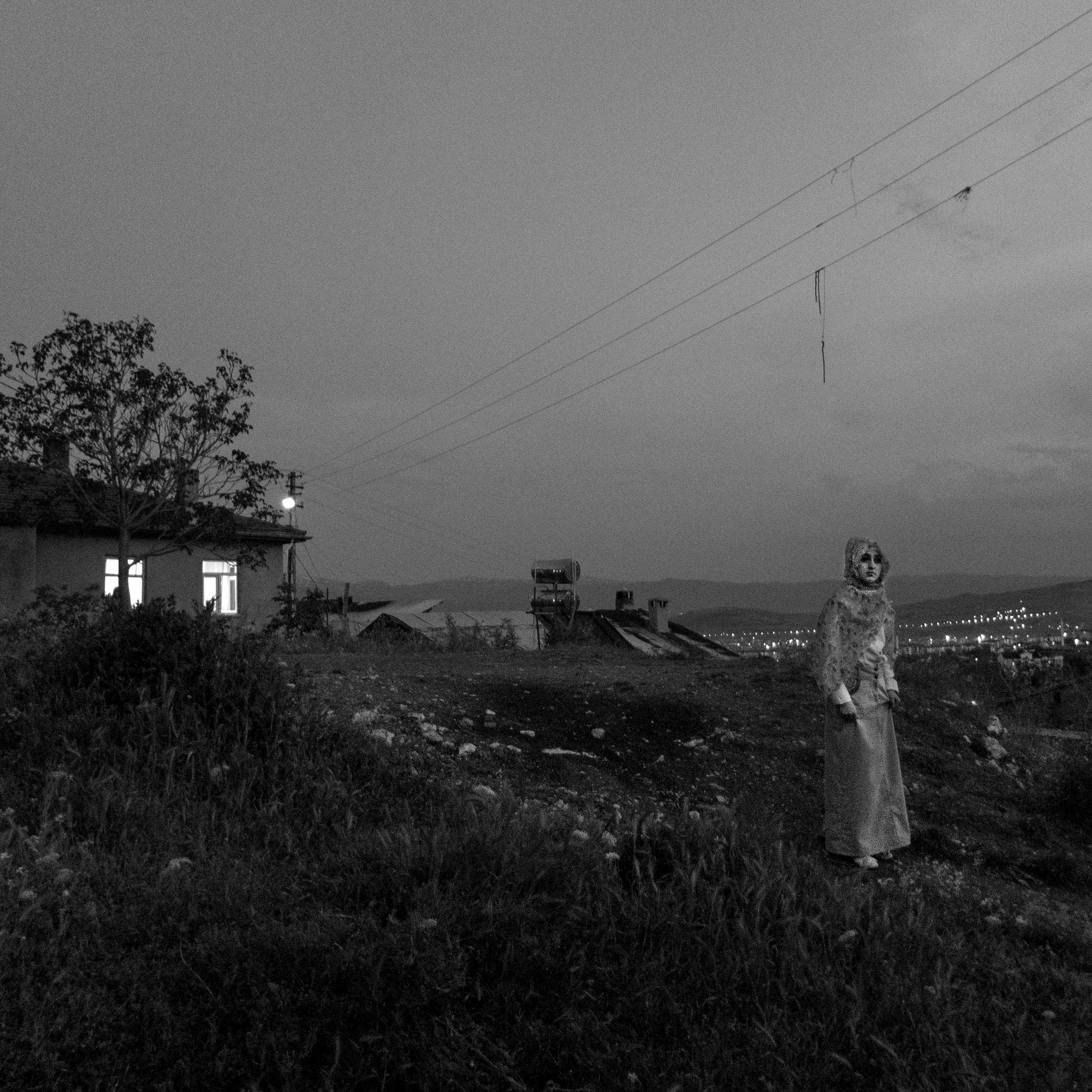Past Exhibitions
Tigran Tsitoghdzyan is a New York-based artist whose photo-realistic paintings merge an interest in classical and modern art with an emphasis on his own experiences as a father and an immigrant. Tigran’s work is exhibited widely including Art Basel Miami, Cube Art Fair in Times Square, and globally in cities such as Dubai, Singapore, Istanbul, Cannes, Zurich, Monaco, and Brussels.
Preview and reception exclusively for members. A new exhibit of 40 works of art from our collection curated by Ryann Casey. Some of the artists include Minas Avetisyan, Martiros Sarian, Maria Manukyan Batlle, Reuben Nakian, Naomi Pridjian, Jean Jansem, Jean Carzou, Edgar Chahine, Martin Barooshian, and Kevork Mourad.
Photographer and installation artist Ara Oshagan's show titled “Disrupted, Borders” is open to the public on our third-floor contemporary gallery. Drawing on his own history and identity, Oshagan brings together several series of work that focus on “his interest in diasporic identity, afterlives of displacement and colonization, erasure and (un)imagined futures.” Curated by Ryann Casey.
This exhibition, our largest in 50 years, features more than 75 artists including Lita Albuquerque, John Altoon, Jean-Michel Basquiat, Lynda Benglis, Vija Celmins, Gregory Wiley Edwards, Frank Gehry, Helmut Newton, Ed Ruscha, and Andy Warhol. Curated by Rachel McCullah Wainwright. (Click here)
If you enjoy modern Armenian art, you’ll want to visit the Armenian Museum of America soon. We’ve got two contemporary art exhibitions on display, including eight paintings by the infamous Dr. Jack Kevorkian, and eight paintings from Armenia including the oversized work by Armen Adilkhanian (1959- ) pictured here.
This exhibition explores the intertwined lives of diplomat Diana Agabeg Apcar (1859–1937) and artist Berjouhi Kailian (1914–2014). In 1919, history connected these two women in Yokohama, Japan. As refugees from the Armenian Genocide, Berj and her mother found themselves in the shadow of Diana’s sturdy branches as she helped them find their way to a new home in the United States. Berj’s creative life flourished for 95 more years because of Diana’s compassion.
AMPER
Artist-in-Residence since 2016, Arevik Tserunyan has found inspiration in the Museum’s needlelace collection, some of which were created by Armenian orphans during and after the Genocide. Others were made by women as part of a long-standing tradition. For Arevik, the painstaking and meticulous work of creating laces revealed these orphans’ resolve to endure after suffering unimaginable loss. Through the process of tying these intricate knots, the children created a way to connect to their stolen culture, while reconstructing their future.
Born in Yerevan and now living in Boston, the duality of Arevik’s existence is present in her work. Her experience of moving to the United States deepened her understanding of the struggle Genocide survivors faced with their cultural loss. Interacting with the Museum’s collections has allowed her to re-examine her cultural heritage. This personal rediscovery process is present in Amper, where Arevik explores the remnants of a world, once flourishing with life, now stained with death. The bonding nature of clouds connects humanity and unites generations as they travel the globe, paralleling the trauma of the Genocide, which in turn connects the Armenian people.
As a child, Marsha Nouritza Odabashian absorbed her grandmother's experience of the Genocide. By applying traditional Armenian onion skin dyes to textured paper, she reveals the hidden bruises and marks that lie within. Her surface drawings trace a more deliberate narrative connecting personal experience to historical record. The finished pieces serve as visual recovery rooted in the creative desire to challenge the darker impulses of human nature and history.
In May of 2012, Armenian-American father and daughter Nubar and Abby Alexanian embarked on a journey to commemorate the Armenian Genocide (1915–1923) as a powerful act of reparative rebellion. They traveled to their ancestral home in eastern Turkey—a place where their family was systematically killed and displaced by Ottoman Turks. Their intention was to create, not only a right of return, but a site of return as a step toward healing and connection to their obscured familial past.
This show presents the first “harvest” of works that our young artists made during the Summer Studio classes here at the Armenian Museum this past July. Under the guidance of our Artist-in-Residence Arevik Tserunyan, students were encouraged to express their creativity by exploring the collection of Armenian art in the galleries and by using unique Armenian painting materials and techniques.










